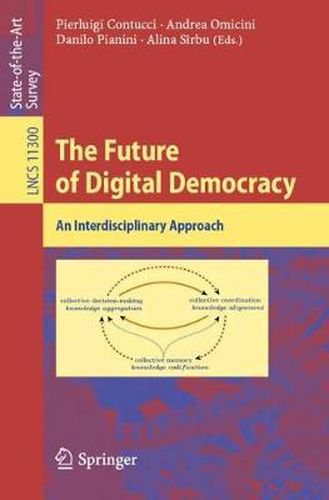Readings Newsletter
Become a Readings Member to make your shopping experience even easier.
Sign in or sign up for free!
You’re not far away from qualifying for FREE standard shipping within Australia
You’ve qualified for FREE standard shipping within Australia
The cart is loading…






This title is printed to order. This book may have been self-published. If so, we cannot guarantee the quality of the content. In the main most books will have gone through the editing process however some may not. We therefore suggest that you be aware of this before ordering this book. If in doubt check either the author or publisher’s details as we are unable to accept any returns unless they are faulty. Please contact us if you have any questions.
Digital democracy is a hot topic nowadays, its relevance growing along with the impact of computational platforms on our(political) life. Communication is the basal fabric on which society is defined, and it appears obvious that the civic organisation and politics itself should take the opportunities the digital revolution offers. Institutional inertia, nevertheless, causes large delays in updating and adapting. Therefore, the balance between participation and delegated representation is now facing a crisis. A thorough understanding of the factors involved in participation is a first step towards providing solutions. Using the Internet to fill the gap and build a digital democracy provides an opportunity, along with several risks that need to be carefully analysed. It needs to be implemented using a fully inter- and trans-disciplinary perspective. The six contributions included in this State-of-the Art Survey present research in the field of social sciences as well as mathematics and computer science and aim at contributing to a better understanding of the potential and dangers of digital democracy, helping readers go beyond the misunderstandings, the misconceptions,and the conceptual and practical abuses that the very notion of democracy is undergoing during this age of technological revolution and social turmoils.
$9.00 standard shipping within Australia
FREE standard shipping within Australia for orders over $100.00
Express & International shipping calculated at checkout
This title is printed to order. This book may have been self-published. If so, we cannot guarantee the quality of the content. In the main most books will have gone through the editing process however some may not. We therefore suggest that you be aware of this before ordering this book. If in doubt check either the author or publisher’s details as we are unable to accept any returns unless they are faulty. Please contact us if you have any questions.
Digital democracy is a hot topic nowadays, its relevance growing along with the impact of computational platforms on our(political) life. Communication is the basal fabric on which society is defined, and it appears obvious that the civic organisation and politics itself should take the opportunities the digital revolution offers. Institutional inertia, nevertheless, causes large delays in updating and adapting. Therefore, the balance between participation and delegated representation is now facing a crisis. A thorough understanding of the factors involved in participation is a first step towards providing solutions. Using the Internet to fill the gap and build a digital democracy provides an opportunity, along with several risks that need to be carefully analysed. It needs to be implemented using a fully inter- and trans-disciplinary perspective. The six contributions included in this State-of-the Art Survey present research in the field of social sciences as well as mathematics and computer science and aim at contributing to a better understanding of the potential and dangers of digital democracy, helping readers go beyond the misunderstandings, the misconceptions,and the conceptual and practical abuses that the very notion of democracy is undergoing during this age of technological revolution and social turmoils.